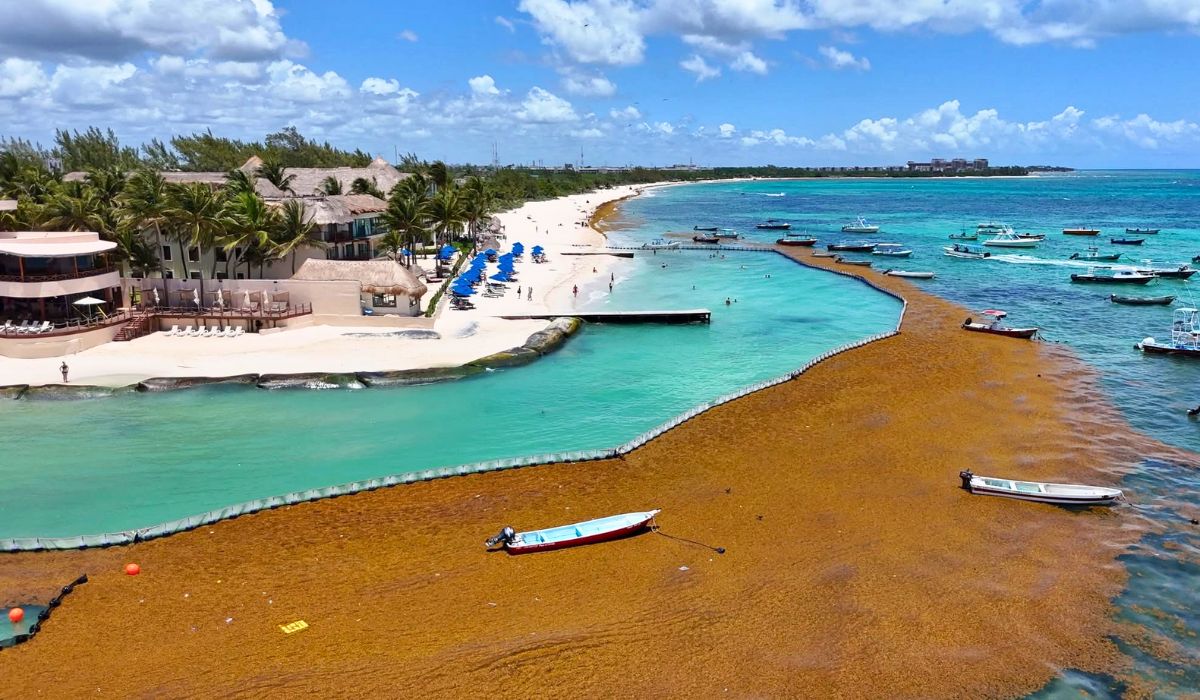Sargassum in the Atlantic has reached record levels in 2025, with an estimated volume of 31 million metric tons, according to the Sargassum Watch System (SaWS), an initiative of the College of Marine Science at the University of South Florida (USF). This marks a 40% increase over the previous record set in June 2022.
Stretching over 5,500 nautical miles from the west coast of Africa to the Gulf of Mexico, this massive belt of floating algae is affecting key regions of the Caribbean, as well as the Florida coastline, including the Florida Keys, Key Biscayne, and other popular tourist areas. Satellite imagery released by USF and NOAA Coral Reef Watch illustrates the vast extent of this bloom, which is expected to continue expanding in the coming months.
The proliferation of this marine macroalgae poses environmental, health, and economic challenges, particularly for tourism-dependent destinations in Mexico, the United States, and the Caribbean islands. Researchers from both the U.S. and Mexico attribute the growth of sargassum to a mix of factors, including climate change, excessive fertilizer use, and nutrient runoff from major river basins such as the Amazon and the Mississippi.
Unprecedented Volume in 2025
The University of South Florida reported that in April 2025, the total volume of sargassum in the central and western tropical Atlantic reached approximately 31 million metric tons. This data, gathered via satellite and processed through the SaWS system, represents the highest level recorded since monitoring began in 2011.
According to Brian LaPointe, a researcher at the Harbor Branch Oceanographic Institute of Florida Atlantic University, this year’s increase represents roughly 40% more than the 2022 peak. In comments reported by CNN, LaPointe noted that the growth season is still ongoing, meaning the volume may continue to rise.
The densest concentrations have been detected in the central and western Atlantic, drifting with ocean currents toward the Caribbean Sea, the Gulf of Mexico, and the eastern coast of the United States. Significant patches have also been observed off the coast of Brazil and along the Lesser Antilles.
Impact on Florida, Mexico, and the Eastern Caribbean
Recent updates from NOAA Coral Reef Watch and local media outlets such as The Miami Herald indicate that sargassum has already begun affecting…
Read full article: 31 Million Tons of Sargassum Heading Toward the Beaches of Florida, Mexico, and the Caribbean

The post “31 Million Tons of Sargassum Heading Toward the Beaches of Florida, Mexico, and the Caribbean” by Viktor Vincej was published on 05/17/2025 by www.travelinglifestyle.net






































Leave a Reply